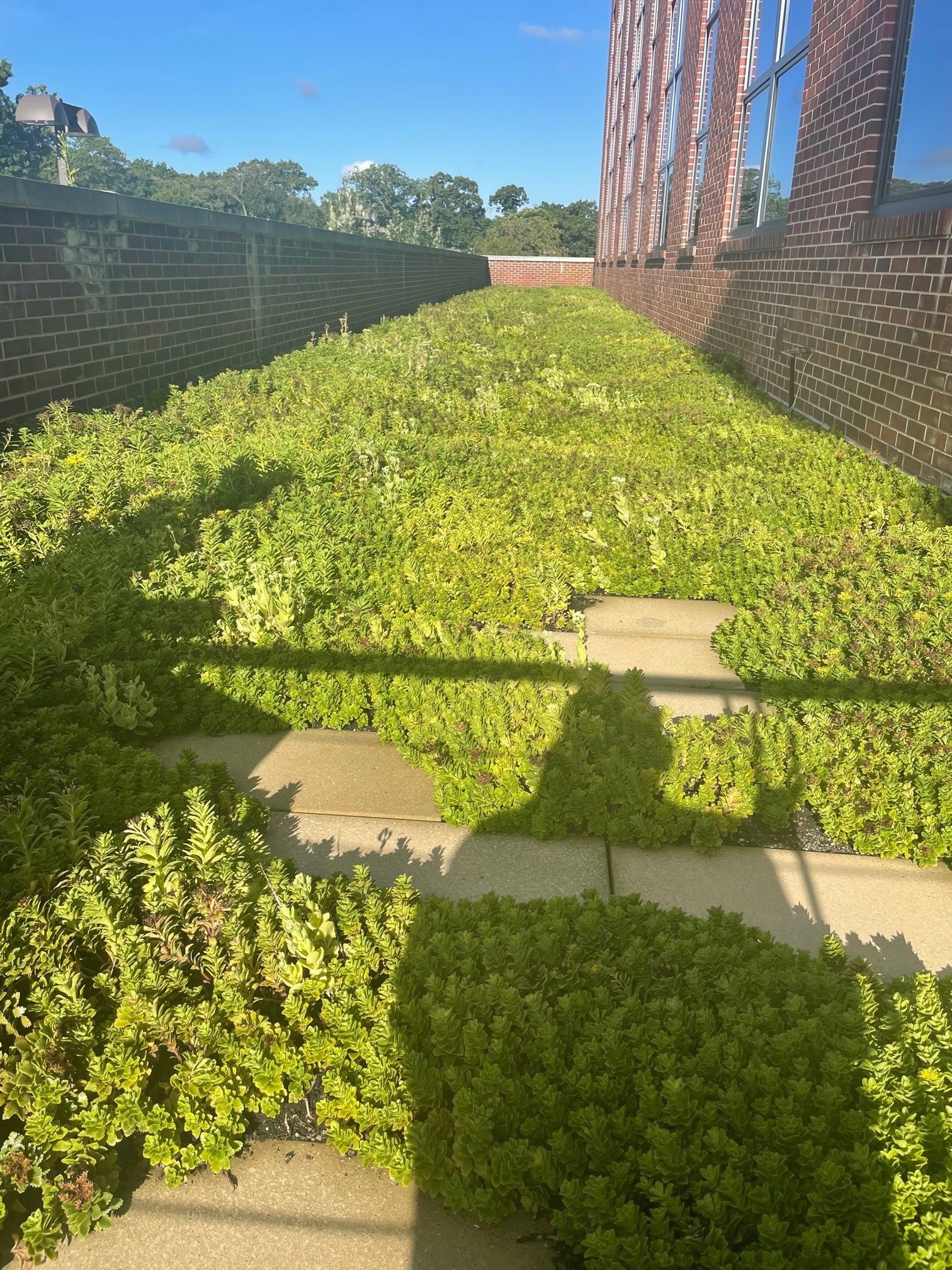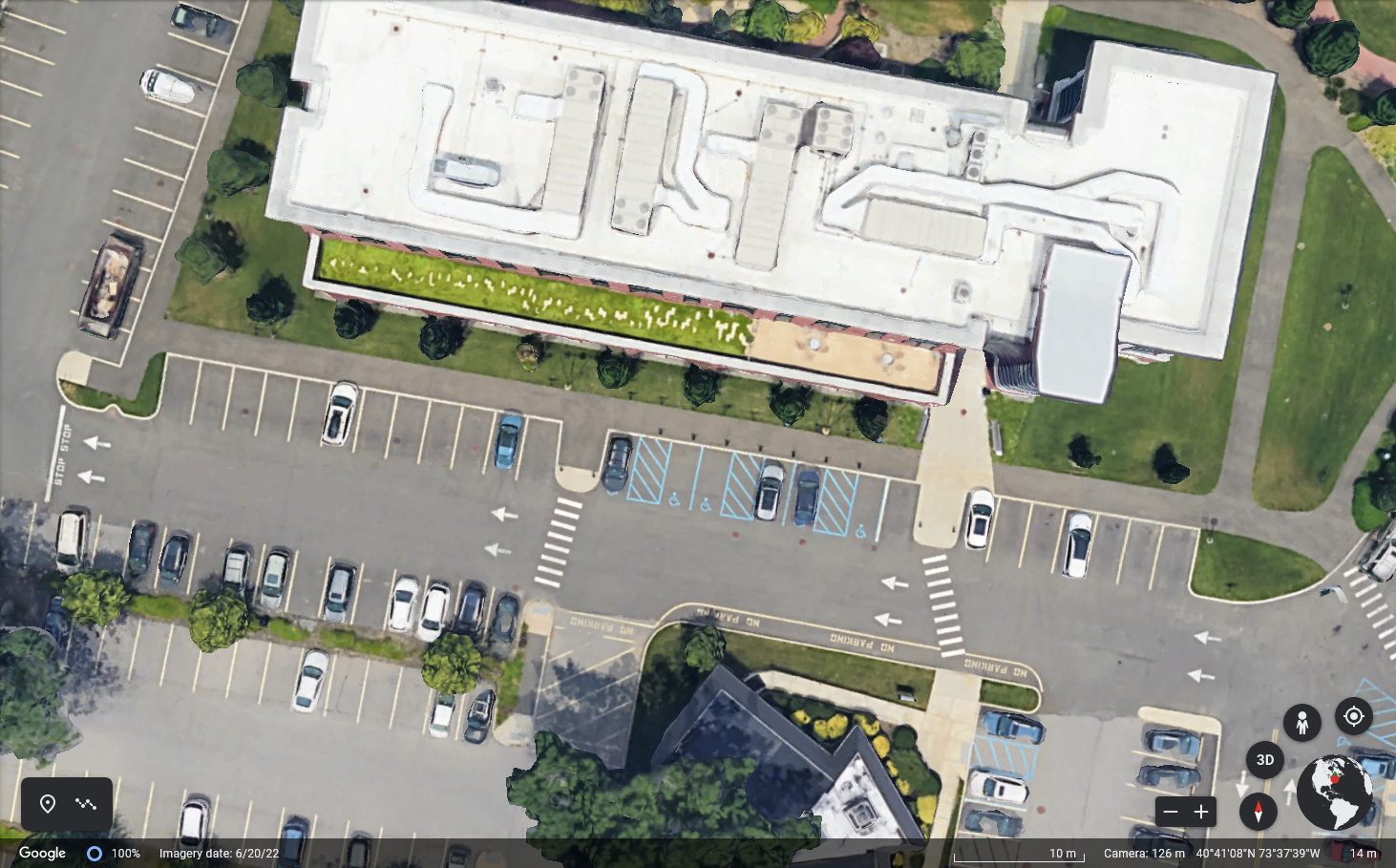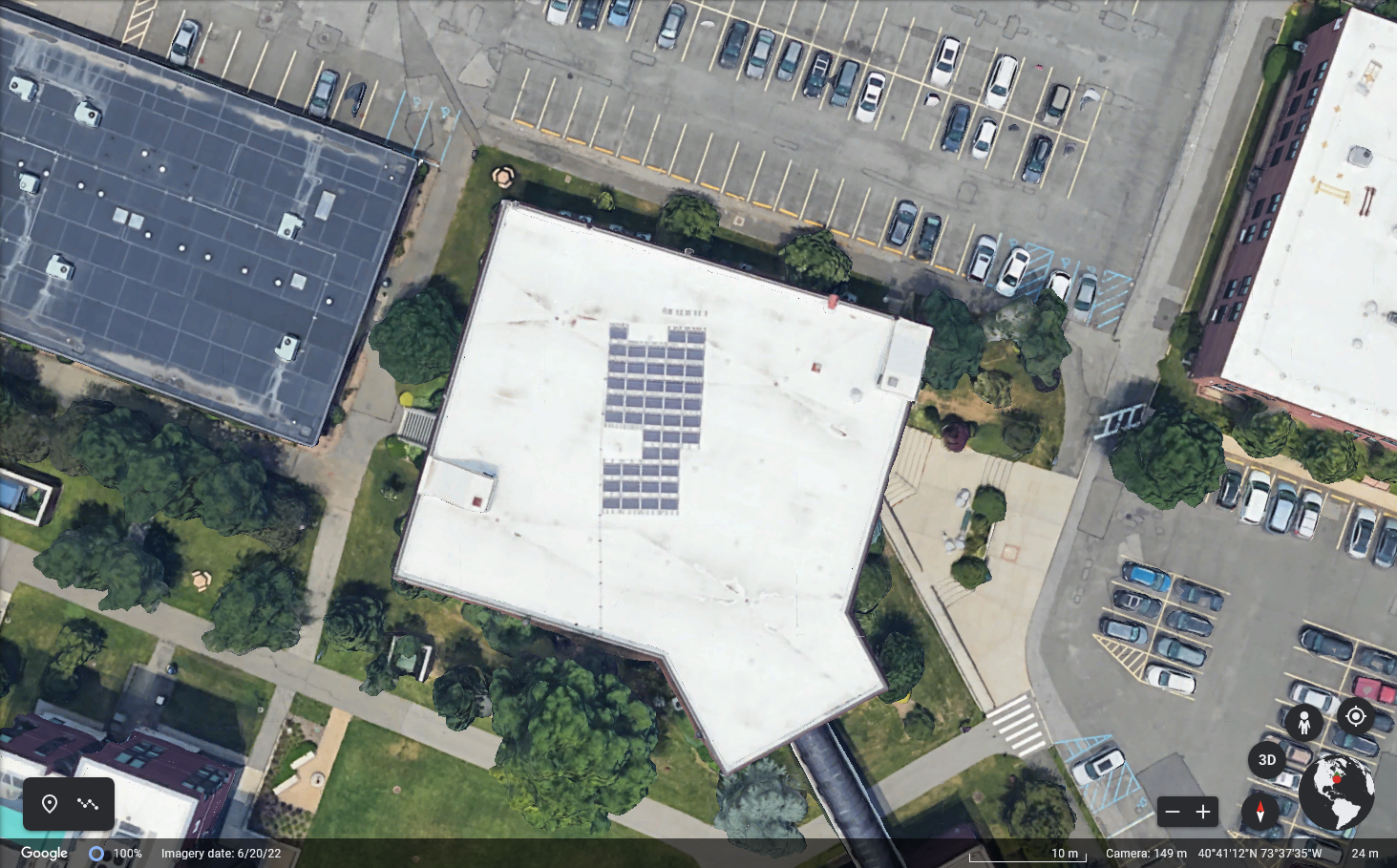Projects/Events

Campus Endeavors
-
Hagan Green Roof
There is often little space for greenery in urban areas. An ideal solution for this is greenery on the roof. A green roof is not only appealing to look at, it also offers many other advantages, such as water buffering, temperature regulation, sound insulation, air purification and it also encourages biodiversity.
Green Roofs can:
- Reduce the stormwater runoff rate from a roof by up to 65%
- Make roof surfaces 30-40% cooler
- Reduce heat flux from roof to building by up to 72%
- Last 40 years or more
- Attract such wildlife as birds, bees and spiders
The Hagan Nursing Center houses a green roof area. It is maintained regularly and has always thrived. Take a look:


Aerial view of the green roof.
-
Casey Center Solar Photovoltaic (PV) System
In 2009, Molloy University installed a Solar Photovoltaic (PV) system on the roof of the Casey Building. A PV system is an energy system that has been designed to capture energy from the sun and transform it into electricity by using photovoltaics, which is also known as solar panels.
Some advantages to using a solar PV system are:
- Since there are large amount of energy simply coming from sun’s rays, scarcity is not a concern at all. This can be a solution to the scarcity of other energy sources, especially sources originating from fossil fuels.
- Solar radiation does not emit any type of pollution so therefore it lacks any CO2 emissions.
- Solar radiation energy is available anywhere so regardless of location, solar energy can be generated anywhere in a decentralized way (such as rooftop panels). This would also mean that the losses occurring due to the transmission of energy is being reduced.
- Implementing solar PV technology can be modular so the size of PV system can be increased when the need for electricity increases.
Here is an aerial view of the panels atop the Casey Building:
